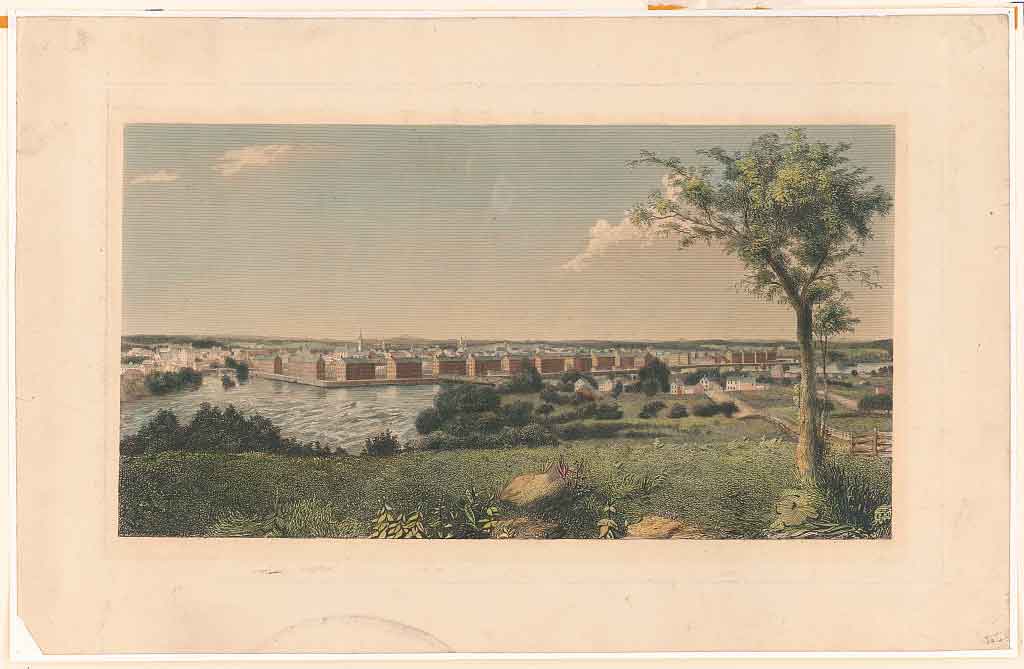
View of Lowell, Massachusetts at the confluence of the Merrimack and Concord rivers, with a row of textile mills or factories mainly along the Merrimack River circa 1840-1860. Library of Congress. https://lccn.loc.gov/945156
The mighty Merrimack River called budding industrialists to Chelmsford to harness the power of the water going over Pawtucket Falls. The former farmland was quickly filled with factories and housing as engineers designed a web of industrial canals, often with pastoral walkways for the Yankee workforce. The area split off from Chelmsford to become its own town in 1826.
Irishmen from Boston dug those canals, camped in an area that come to be called The Acre and built a community. The millowners, who needed the labor but had issues with the religion and lifestyle of the immigrants, donated land for a church, St. Patrick’s, the third oldest Catholic church in Massachusetts. Perhaps they were hoping the solace of religion or the strongarm of the clergy would reign in the rough-living day laborers. In 1842 British novelist Charles Dickens praised the beautiful factory town and the working conditions. He did not see the Paddy Camps.
Visit the link to the Library of Congress to see all the details of the illustration.